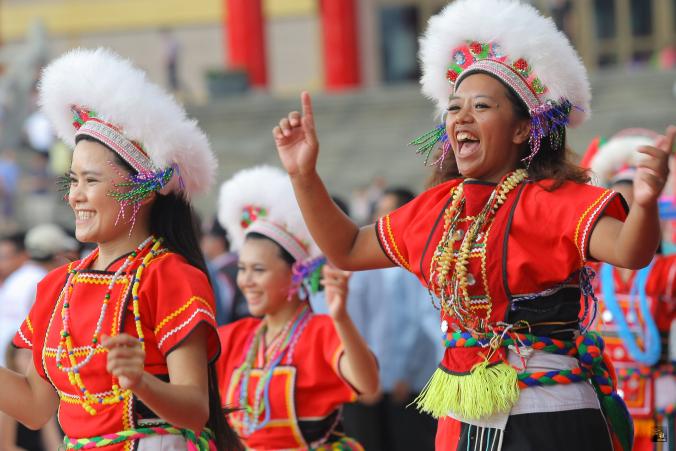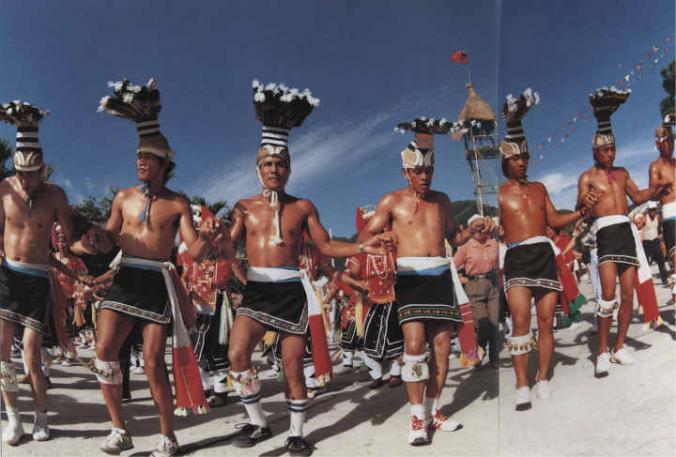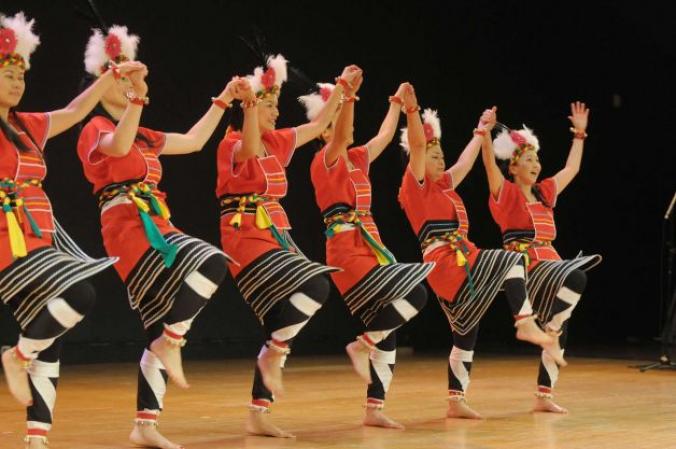Living on Taiwan more than 8,000 years before the first arrival of the Han Chinese in the 17th century, the Taiwanese aborigines (原住民) are Austronesian people, with linguistic and genetic ties to the people of the Philippines and other Polynesian groups. They are estimated to constitute about 2% of the population of Taiwan. Visitors to Taiwan should experience aboriginal culture alongside Chinese culture to gain a more rounded insight into the culture and history of Taiwan.
Throughout Taiwan's complicated history, the many different aboriginal tribes and groups have been slowly homogenised and assimilated to varying degrees with both Chinese culture and with the cultures of previous colonial powers, most notably Holland and other western Christian missionary groups. Of the original 26 known Formosan Languages, only a few remain as the languages of these communities are to a large degree mutually unintelligible with one another, and are slowly replaced by Mandarin Chinese as a common tongue, not unlike the situation with American Indigenous, First Nations, or Latin Americans speaking English or Spanish to the detriment of their own native language development in the modern era.
As a distinct ethnic group from Han Chinese, aborigines face many economic and social barriers, stemming from substandard education quality by comparison and language and cultural barrier. The majority of aboriginal people live in mountainous regions, primarily along the east coast nearby Hualien and Taitung. Some communities located high up in the mountains may rarely visit the cities, and live by hunting and subsistence farming growing high mountain agriculture and produce such as vegetables and high mountain tea, some of which is sold to the cities to generate revenue for the tribe.
In recent years since the democratisation of Taiwan, aboriginal groups have been reviving their traditional cultures and sharing their distinct musical style and talent with the world. Mandarin pop superstars such as A-mei (張惠妹, Chang Hui-mei), Chang Chen-yue (張震嶽), A-Lin, and Liang Wen-yin (梁文音) are all aboriginal artists that have achieved stardom in Asia and the world. Aboriginals have also found success in athletics, with many participating in both Summer and Winter Olympics, as well as local sports franchises. In an effort to achieve higher political self-determination and increase economic development in local communities, tourism and ecotourism have become major industries in aboriginal communities.
Aboriginal tribes and groups are sparsely located all over Taiwan, and, while sharing a common ethnicity, greatly differ in their language, religious, and traditional customs. The government recognised groups include the Amis, Atayal, Bunun, Kavalan, Paiwan, Puyuma, Rukai, Saisiyat, Sakizaya, Seediq, Tao, Thao, Tsou, and Truku, while the unrecognized groups include the Babuza, Basay, Hoanya, Ketagalan, Luilang, Pazeh/Kaxabu, Papora, Qauqaut Siraya, Taokas, and Trobiawan.
To learn more about aboriginal culture, take a trip to the following destinations:
| English Name | Chinese Name | Destination or Attraction |
|---|---|---|
| Truku (Taroko) | 太魯閣 | Taroko National Park (太魯閣國家公園) |
| Atayal | 泰雅族 | Wulai Atayal Aboriginal Village (烏來) |
| Thao or Ngan | 邵族 | Sun Moon Lake, Nantou County |
| Sasiyat | 賽夏 | Nanzhuang, Miaoli County |
| Tao or Yami | 達悟族 or 雅美 | Orchid Island |
| Kavalan | 噶瑪蘭族 | Yilan County |
Please enjoy this famous song from Taiwanese Aborigines, later sampled by the European group Enigma as "Return to Innocence". Although the song's sample was unauthorized by the artist, it later appeared during the 1996 Summer Olympics, and credit was later given to the artist Difang Tuwana.


